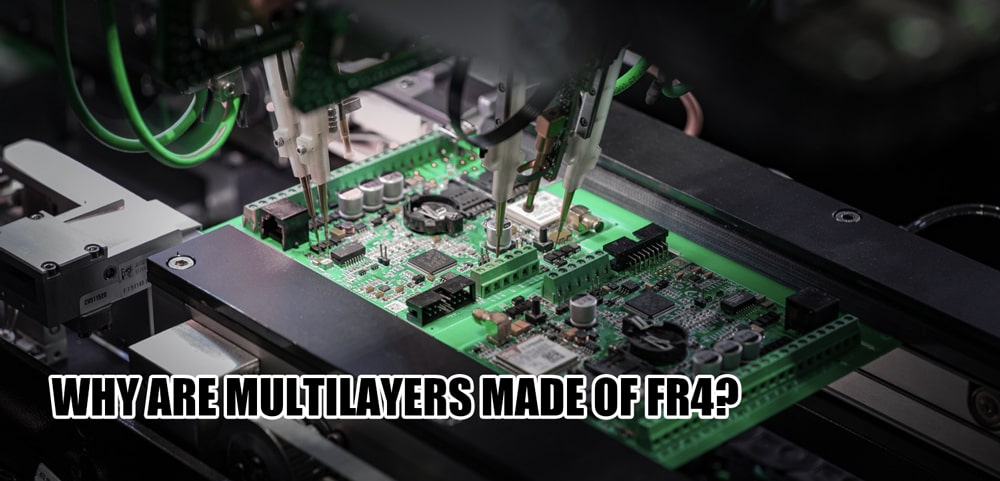Why are multilayers made of FR4?
21 January 2025
Views: 1286
In PCB manufacturing, FR4 material plays an important role in PCB manufacturing, almost all the boards we can see in our impression belong to FR4 PCB, then why most of the multilayer PCBs use FR4 material?

What is FR4 material?
FR4 is a glass fiber epoxy resin copper-clad laminate. Glass fiber is based on chlorite, quartz sand, limestone, dolomite, boron calcium stone, boron magnesium stone six kinds of ores as raw materials by high-temperature melting, drawing, winding, weaving and other processes into the fabric, the diameter of its monofilament for a few microns to more than two dozen microns, the equivalent of a hair 1/20-1/5, each bundle of fiber filaments are hundreds or even thousands of monofilament composition.
FR4 is mainly used in general computers, instruments, advanced home appliances and general electronic products. For general electronic products, FR4 sheet is generally used, which is not a material name, but a material grade, which means that the resin material must be able to self-extinguish a material specification after combustion state.
Why do most multilayer boards use FR4?
FR-4 material is the most successful and widely used material in PCB manufacturing. Today's FR4 materials are typically used in the most common terminations. For relatively simple applications, FR4 materials with a TG value of 130-140°C can be selected. For multilayer or thicker circuit boards, which already require higher heat resistance, FR4 materials with a TG value of 170-180 should be selected. With the emergence of lead-free soldering process, in addition to TG, TD and other indicators should be considered together. In addition, higher TG values do not always mean better performance in lead-free soldering applications. In other words, as end-use applications expand, so will the range of FR4 materials available.
In addition, the composition of FR4 materials, particularly glass cloth and epoxy resins, makes FR4 substrates a good combination of performance, processability, and low cost. The range of available glass cloth types makes it easy to control the thickness of the dielectric layer or the overall circuit board.
Epoxy's are extremely easy to adjust the material's properties to match the needs of the end application. It is also the fact that epoxy resins combine excellent electrical, thermal and mechanical properties that makes them the most widely used type of resin in PCBs. Compared to other types of materials, epoxy resins are easier to match to traditional PCB manufacturing processes. Good manufacturability helps to control the cost of FR4.
The range of FR4 base types, unique combination of properties, processability, and low cost characteristics make them a prime choice for multilayer PCBs.















